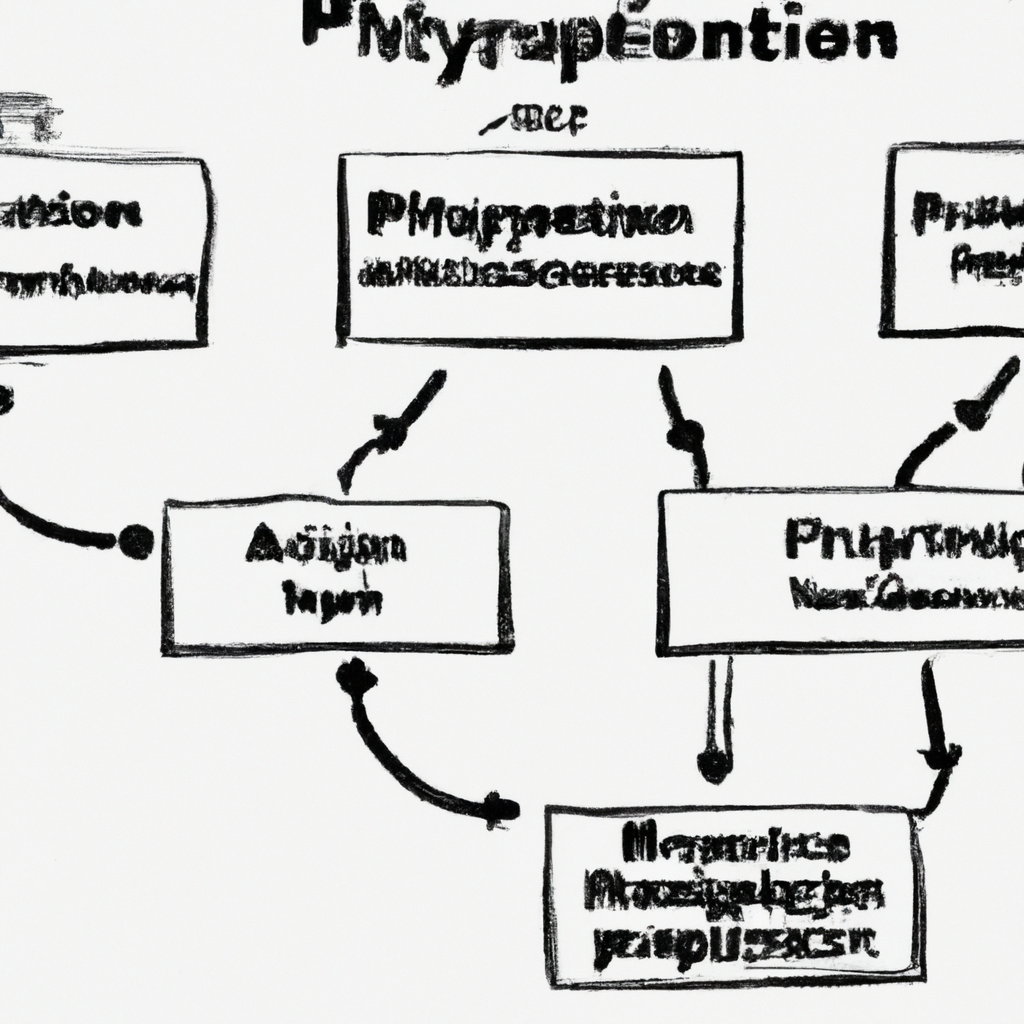Dear Readers,
AI plays a crucial role in our blog, helping us manage our time more effectively to keep the content flowing. While AI assists with content creation, which may lead to occasional spelling or grammar errors, our primary goal remains clear: to deliver meaningful insights to you. For important matters, please consult a specialist.
Thank you for your understanding and support.
Best regards,
Education.com.cy
Summary
The article highlights various individuals’ experiences with learning to code, emphasizing that coding can be learned at any stage, including college. It features stories from notable figures like Bill Gates, Jack Dorsey, and Mark Zuckerberg, who began coding at different ages and under different circumstances. The article underscores that coding is not just about mastering complex algorithms but about problem-solving and creativity. It also points out the growing demand for skilled programmers and the empowering nature of learning to code, suggesting that coding skills can lead to significant opportunities and innovations.
2. Introduction
Learning to code in college is a significant step for many individuals, as it provides a structured environment to acquire essential programming skills. College courses often introduce students to the fundamentals of computer science, allowing them to write their first programs and understand the basics of coding. This foundational knowledge is crucial, as it teaches problem-solving and logical thinking, which are valuable in various fields. Moreover, coding skills are increasingly in demand across numerous industries, making it an empowering and versatile ability that can open up numerous career opportunities. Whether aiming to innovate in technology, enhance other professional skills, or simply understand the digital world better, learning to code in college can be a transformative experience.

3. Main Sections
Importance of Learning to Code
Learning to code in college is crucial for several reasons, offering both immediate and long-term benefits.
Firstly, coding teaches problem-solving skills. It involves breaking down complex problems into manageable parts, which is a valuable skill in any field. For example, Makinde, an early Facebook engineer, emphasizes that coding is more about the process of breaking down problems than coming up with complicated algorithms.
Secondly, coding knowledge opens up numerous career opportunities. The tech industry is constantly growing, and there is a high demand for skilled programmers. Hadi, the creator of Code.Org, points out that there are not enough people trained with these skills today, leading to many unfilled jobs. Companies often go to great lengths to attract talented engineers, offering perks like free food, laundry services, and creative workspaces.
Moreover, coding can be empowering and transformative. It allows individuals to bring their ideas to life and potentially impact millions of people. For instance, Mark, who created Facebook, started coding to create something fun for himself and his sisters. This small project eventually evolved into a platform used by billions.
Additionally, coding is not limited to the tech industry. It has applications in various fields such as agriculture, entertainment, and manufacturing. Bronwen, a technical artist at Valve, highlights that software has revolutionized many industries, making coding a valuable skill regardless of one’s career path.
Learning to code also fosters creativity and innovation. For example, Ruchi, the first female engineer at Facebook, wrote a program that played Tic-tac-toe during her freshman year. This initial project can spark further interest and lead to more complex and innovative creations.
Finally, coding can be a fun and rewarding experience. Gabe, who created Valve, describes the astonishment of making a computer display “Hello World” for the first time. This sense of achievement can motivate students to continue learning and exploring new possibilities.
In summary, learning to code in college equips students with essential problem-solving skills, opens up diverse career opportunities, empowers them to create and innovate, and can be an enjoyable and fulfilling endeavor.

Find out how the strategies discussed in the article
"How Teaching a Song Can Improve Your Child’s Learning and Well-Being"can help address internet addiction in children and teens.
Choosing the Right Programming Language
Choosing the right programming language for college students depends on several factors, including the student’s goals, the industry they are interested in, and the type of projects they want to work on. Here are some detailed explanations, examples, and applications for a few popular programming languages:
- Python:
- Explanation: Python is known for its simplicity and readability, making it an excellent choice for beginners. It has a straightforward syntax that is easy to learn and understand.
- Examples: Python is widely used in web development (Django, Flask), data science (Pandas, NumPy), machine learning (TensorFlow, Scikit-learn), and automation.
-
Applications: Students can use Python to build web applications, analyze data, create machine learning models, and automate repetitive tasks.
-
Java:
- Explanation: Java is a versatile and powerful language that is used in many large-scale applications. It is object-oriented, which helps students understand key programming concepts.
- Examples: Java is commonly used in Android app development, enterprise-level backend systems, and large-scale web applications.
-
Applications: Students can develop Android apps, work on enterprise software solutions, and build robust backend systems.
-
JavaScript:
- Explanation: JavaScript is essential for web development. It allows students to create interactive and dynamic web pages. With the rise of frameworks like Node.js, JavaScript can also be used for server-side programming.
- Examples: JavaScript is used in front-end frameworks (React, Angular, Vue.js) and back-end development (Node.js).
-
Applications: Students can build interactive websites, single-page applications (SPAs), and server-side applications.
-
C++:
- Explanation: C++ is known for its performance and control over system resources. It is widely used in systems programming, game development, and applications requiring real-time processing.
- Examples: C++ is used in game engines (Unreal Engine), operating systems, and performance-critical applications.
-
Applications: Students can develop games, work on system-level programming, and create applications that require high performance.
-
Ruby:
- Explanation: Ruby is known for its elegant syntax and is often used in web development. The Ruby on Rails framework simplifies the process of building web applications.
- Examples: Ruby is primarily used with the Ruby on Rails framework for web development.
-
Applications: Students can build web applications quickly and efficiently using Ruby on Rails.
-
SQL:
- Explanation: SQL (Structured Query Language) is essential for database management. It allows students to interact with and manipulate databases.
- Examples: SQL is used in various database management systems like MySQL, PostgreSQL, and SQLite.
-
Applications: Students can manage and query databases, which is crucial for backend development and data analysis.
-
Swift:
- Explanation: Swift is the language for iOS and macOS development. It is designed to be safe, fast, and expressive.
- Examples: Swift is used for developing iOS apps and macOS applications.
- Applications: Students can create apps for iPhones, iPads, and Mac computers.
In summary, the choice of programming language should align with the student’s interests and career goals. For web development, JavaScript and Python are excellent choices. For mobile app development, Swift and Java are suitable. For data science and machine learning, Python is highly recommended. For systems programming and game development, C++ is ideal. Understanding the applications and strengths of each language can help students make an informed decision.

Resources and Tools for Learning
Learning to code in college can be an enriching experience, and there are numerous resources and tools available to help students master this skill. Here are some detailed explanations, examples, and applications:
-
Introductory Courses: Many colleges offer introductory courses in computer science, such as “Intro to Computer Science” or “Programming 101.” These courses often use languages like Python or Java to teach fundamental programming concepts. For example, a student might learn to write a simple program that plays Tic-tac-toe, similar to what Ruchi did in her freshman year.
-
Online Platforms: Websites like Code.org provide online tutorials and coding exercises that can supplement college coursework. These platforms often offer interactive lessons that cover a wide range of topics from basic syntax to advanced algorithms. For instance, a student could use Code.org to learn how to create a program that asks for user input, such as their favorite color or age, similar to Drew’s early programming experiences.
-
Coding Bootcamps: Some students might opt for intensive coding bootcamps, which are short-term, immersive programs designed to teach coding skills quickly. These bootcamps often focus on practical applications and real-world projects, helping students build a portfolio of work that can be useful for job applications.
-
Textbooks and Online Resources: Many students rely on textbooks and online resources to learn new programming languages and concepts. Websites like Stack Overflow and GitHub are invaluable for finding code snippets, troubleshooting errors, and collaborating on projects. For example, Mark mentioned looking up information in books or on the Internet to add new features to his programs.
-
College Labs and Workshops: Colleges often have computer labs equipped with the necessary software and hardware for coding. Additionally, workshops and hackathons provide hands-on experience and opportunities to work on collaborative projects. These environments encourage experimentation and innovation, much like the creative spaces described by Hadi, where engineers can play, relax, and think.
-
Mentorship and Peer Learning: Learning from peers and mentors can be incredibly beneficial. Joining coding clubs or groups, such as the Whiz Kids mentioned by Will.I.Am, can provide support and motivation. These groups often work on projects together, share knowledge, and help each other overcome challenges.
-
Practical Applications: Applying coding skills to real-world problems can enhance learning. For example, students might develop apps, websites, or software that address specific needs or interests. This practical application not only reinforces coding concepts but also demonstrates the impact of technology on various fields, from agriculture to entertainment.
By leveraging these resources and tools, college students can effectively learn to code, develop problem-solving skills, and prepare for careers in technology and other industries.

Coding Bootcamps vs. Traditional Classes
Coding bootcamps and traditional college classes offer different approaches to learning how to code, each with its own set of advantages and applications.
Coding Bootcamps:
- Duration and Intensity:
- Bootcamps are typically short-term, intensive programs that last from a few weeks to a few months. They are designed to immerse students in coding and software development, often requiring full-time commitment.
-
Example: A bootcamp might run for 12 weeks, with students coding for 8-10 hours a day, five days a week.
-
Curriculum Focus:
- The curriculum is usually focused on practical, hands-on skills that are directly applicable to the job market. This includes learning specific programming languages, frameworks, and tools that are in high demand.
-
Example: A bootcamp might focus on web development, teaching HTML, CSS, JavaScript, and popular frameworks like React or Angular.
-
Career Services:
- Many bootcamps offer career services such as resume workshops, interview preparation, and job placement assistance. They often have partnerships with tech companies looking to hire graduates.
-
Example: A bootcamp might have a hiring fair at the end of the program where students can meet potential employers.
-
Cost:
- Bootcamps can be expensive, but they are generally less costly than a four-year college degree. Some bootcamps offer income share agreements (ISAs) where students pay a percentage of their salary after they get a job.
- Example: A bootcamp might cost $10,000-$20,000, compared to the higher cost of a traditional college education.
Traditional College Classes:
- Duration and Depth:
- College programs are longer, typically taking four years to complete a bachelor’s degree. They provide a more in-depth and comprehensive education, covering both theoretical and practical aspects of computer science.
-
Example: A computer science degree might include courses in algorithms, data structures, operating systems, and software engineering.
-
Broad Curriculum:
- The curriculum is broader and includes foundational courses in mathematics, science, and humanities, in addition to specialized computer science courses. This provides a well-rounded education.
-
Example: Students might take courses in calculus, physics, and literature alongside their coding classes.
-
Research and Theory:
- Traditional programs often emphasize research and theoretical knowledge, preparing students for a wide range of careers, including academia and advanced research roles.
-
Example: A student might work on a research project in artificial intelligence or machine learning as part of their degree.
-
Networking and Extracurriculars:
- Colleges offer opportunities for networking through clubs, internships, and campus events. Students can participate in hackathons, coding competitions, and other extracurricular activities.
- Example: Joining a computer science club or participating in a university-sponsored hackathon can provide valuable experience and connections.
Applications:
- Bootcamps: Ideal for individuals looking to quickly transition into a tech career, especially those who already have a degree in another field or are looking to upskill. They are well-suited for roles like web developer, software engineer, or data analyst.
- Traditional College Classes: Suitable for those seeking a comprehensive education with a strong theoretical foundation. This path is beneficial for careers that require a deep understanding of computer science principles, such as software development, systems architecture, or academic research.
In summary, coding bootcamps offer a fast, focused, and practical route to entering the tech industry, while traditional college classes provide a broad, in-depth education with a strong theoretical foundation. The choice between the two depends on individual career goals, learning preferences, and the time and financial resources available.

Practical Applications and Projects
Learning to code in college can be a highly practical and rewarding experience, offering numerous applications and project opportunities that can enhance both your skills and your resume. Here are some detailed explanations, examples, and applications:
- Introductory Projects:
- Tic-Tac-Toe Game: A simple project where you can learn the basics of programming logic, user input, and control structures. This project helps in understanding how to create a user interface and implement game logic.
-
“Hello World” Program: The classic first program that introduces you to the syntax of a new programming language. It’s a simple way to get started and understand the basic structure of code.
-
Intermediate Projects:
- Personal Website: Building a personal website can teach you HTML, CSS, and JavaScript. This project helps you understand web development basics and how to deploy a website.
-
Basic Calculator: Creating a calculator application can help you learn about functions, user interfaces, and event handling. It’s a great way to practice problem-solving and algorithmic thinking.
-
Advanced Projects:
- Social Media Platform: Developing a basic social media platform can teach you about databases, user authentication, and real-time data handling. This project can be complex but offers a comprehensive learning experience.
-
Mobile Applications: Creating apps for iOS or Android can help you understand mobile development frameworks and tools. Projects like a to-do list app or a simple game can be very educational.
-
Practical Applications:
- Data Analysis Tools: Building tools for data analysis using languages like Python or R can be very practical, especially for students interested in data science. Projects can include data visualization, statistical analysis, and machine learning models.
-
Automation Scripts: Writing scripts to automate repetitive tasks can save time and improve efficiency. Examples include web scraping, file management, and automated reporting.
-
Collaborative Projects:
- Open Source Contributions: Participating in open source projects can provide real-world experience and the opportunity to collaborate with other developers. It’s a great way to learn best practices and contribute to the community.
-
Hackathons: Joining hackathons can be a fun and intensive way to work on projects with peers. These events often focus on solving real-world problems and can lead to innovative solutions and prototypes.
-
Industry-Specific Applications:
- Healthcare: Developing software for patient management, telemedicine, or health monitoring can be highly impactful. Projects can range from simple appointment scheduling systems to complex diagnostic tools.
- Finance: Creating financial applications like budgeting tools, stock market analysis software, or cryptocurrency trading bots can provide practical experience in the finance sector.
By engaging in these projects and applications, students can gain hands-on experience, improve their problem-solving skills, and build a portfolio that showcases their abilities to potential employers.

Overcoming Challenges in Learning to Code
Overcoming challenges in learning to code in college involves several strategies and mindsets that can make the process more manageable and rewarding. Here are some detailed explanations, examples, and applications:
-
Breaking Down Problems: One of the key aspects of coding is the ability to break down complex problems into smaller, more manageable parts. This approach helps in understanding the problem better and finding solutions step-by-step. For instance, if you are tasked with creating a program that manages a library system, you can break it down into smaller tasks like creating a database for books, implementing a search function, and developing a user interface.
-
Incremental Learning: Start with simple projects and gradually increase the complexity as you become more comfortable with the basics. For example, you might begin by writing a simple “Hello World” program and then move on to more complex projects like a Tic-tac-toe game or a basic calculator. This incremental approach helps build confidence and skills over time.
-
Utilizing Resources: Make use of available resources such as textbooks, online tutorials, and coding communities. When you encounter a problem, look it up in a book or search for solutions online. Many successful programmers have used this method to learn new concepts and solve coding challenges.
-
Practice and Persistence: Coding requires practice and persistence. Regularly working on coding exercises and projects helps reinforce learning and improve problem-solving skills. For example, participating in coding challenges or hackathons can provide practical experience and expose you to real-world problems.
-
Collaboration and Networking: Working with peers and joining coding clubs or groups can provide support and motivation. Collaborating on projects allows you to learn from others, share knowledge, and tackle challenges together. Networking with other students and professionals can also open up opportunities for internships and job placements.
-
Real-World Applications: Applying coding skills to real-world problems can make learning more relevant and engaging. For instance, you might develop a mobile app to solve a common problem on campus or create a website for a local business. These projects not only enhance your coding skills but also build your portfolio and demonstrate your abilities to potential employers.
-
Mindset and Attitude: Adopting a positive mindset and being open to learning from mistakes is crucial. Coding can be intimidating,
Thank you for reading our article on Learning to Code in College. We highly value your feedback and invite you to take a brief survey to share your thoughts and experiences. Your responses will be kept confidential.
Dear Readers,
Welcome to my blog, where technology, music, and visual arts come together to spark creativity and growth. By subscribing, you’ll become part of a vibrant community committed to exploring and learning in these areas.
Select the type of engagement that suits you best:
Join us and enjoy tailored content and direct support suited to your interests.
